The health care choices for patients in these areas are usually limited, particularly for patients with prolonged acute or chronic illnesses. The problems are amplified when communities are widely dispersed, and Queensland is a classic example. Queensland, the second largest state in Australia, spans about 1600 km from east to west and 2400 km from north to south. More than two-thirds of Queensland’s 4.2 million people live in the south-eastern “corner” of the state, about 18% (770 000) live in major towns along the east coast, and 15% (650 000) are widely dispersed in remote townships.1 Many smaller towns developed around rural properties, mine sites or Indigenous communities.
For many years, there has been much promise for the widespread use of telemedicine (the delivery of health services across a distance using communication methods such as videoconferencing and email) to support patients, especially in remote areas. The opportunities and benefits of telemedicine have been researched and discussed previously.2,3 Logical reasons for conducting telemedicine include the large distances involved and centralisation of specialist services in major cities. However, the uptake of telemedicine has been disappointingly slow.
It is important to consider the incentives for clinicians to participate in telemedicine. The conventional method of patient referral to a specialist is well entrenched and highly efficient for clinicians, with the cost and inconvenience of travel borne by patients or their families. When the distances are large, the health service may assume responsibility for patients’ travel costs, which may be substantial. Queensland Health provides funding of about $30 million per year towards the Patient Travel Subsidy Scheme (PTSS).4 This scheme has an important role in helping offset some of the costs associated with travel to see a specialist. But because the PTSS is well established and relatively easy to use, we believe that clinicians are more likely to choose this option than to opt for telemedicine. Without an incentive for clinicians to conduct telemedicine, this will probably remain the prevalent model.
In November 2000, we commenced a trial to determine whether we could encourage regional clinicians to use telemedicine instead of referring patients to specialists in the traditional way. A telepaediatric model was crafted by the University of Queensland’s Centre for Online Health (COH) in close collaboration with the Royal Children’s Hospital (RCH) in Brisbane.5,6
The telepaediatric service is configured around a centralised referral centre based in Brisbane, with selected regional centres across Queensland. If a specialist consultation is required, the referring clinician calls a toll-free telephone number, which links them to a telepaediatric coordinator. Once a referral is made to the service, a specialist response is guaranteed within 24 hours.7
The COH currently delivers telepaediatric services to 82 regional hospitals in Queensland and several health centres in northern New South Wales (Box 1). A range of communication methods are used, including email, telephone and videoconference. About 90% of telepaediatric referrals result in a videoconference consultation (Box 2 and Box 3). Most videoconferences are conducted using systems owned and managed by Queensland Health, of which there are about 500 available statewide. Other sessions require dedicated videoconference systems installed by the COH, including mobile units (see below). Some telepaediatric consultations have also required videoconference links to specialists in Western Australia, Tasmania and the Northern Territory.
The telepaediatric service covers 37 different subspecialist areas and involves more than 240 medical, nursing and allied health staff. Subspecialist services offered by the telepaediatric service include cardiology, dermatology, diabetes, general paediatrics, neurology, oncology, orthopaedics, post-acute burns care, psychiatry, and surgery.8,9
In 2004, we designed and built our first mobile system in the shape of a child-friendly robot. The robot was delivered to a paediatric ward that had no full-time paediatrician on staff. The robot was used to conduct daily ward rounds (via videoconference) with paediatricians based at the RCH, Brisbane.10 During the rounds, the robot could be wheeled to each patient’s bedside. A clear advantage of the mobile system is that everyone — the parents, child, local doctors and nurses — can communicate directly with the specialist, who appears as the “face” on the robot’s television monitor (Box 4). A high-quality videoconference camera and built-in microphone enables the specialist to see and speak with everybody at the remote site.
Once feasibility of our mobile robot system was proven, we received valuable funding from mining company Xstrata to deliver four robot systems to hospitals in Queensland (Box 5). For some hospitals, the telepaediatric service has been used mainly for consultations with paediatric specialists in Brisbane. For hospitals with a paediatric ward but no full-time paediatrician, the systems have continued to be used for videolinks with paediatricians from Brisbane and nearby hospitals.
The videoconference appointments have been a lifesaver. I can pick my child up from school for a 10-minute video-appointment with the burns team at the RCH and afterwards I can drop him back to school. Normally, we all [the family] do the 11-hour drive down to Brisbane, which means I have to take a few days off work and my son misses out on a lot of days at school. This is so much easier . . . we love it! (Parent of child with burn injury, Emerald, approximately 900 km from Brisbane)
Eliza [the robot] was cool — I really want one at home because then I would use it to talk to all of my friends. It was funny because the doctor [on screen] could see everything I was doing. He [the doctor] talked to the nurses and then I got better. (Patient, 9 years old, Mt Isa Hospital, approximately 2500 km from Brisbane)
When describing the telepaediatric service I use the acronym PPEET — patients, professionals, education, economics and technology. The kids love the links, especially seeing themselves on the screen. They are generally surprisingly happy to talk to the consultant on the “other side”. The cost saving and the saving of time and effort for families are fantastic. It really is a great system! (Dr Jasper Van der Westhuyzen, Director of Paediatrics, Hervey Bay Hospital, Queensland)
From the specialists’ perspective, it has become clear that a substantial proportion of subspecialist outpatient appointments can be performed at a distance. One of the leading examples of telepaediatrics involves post-acute burns care, where about 17% of all outpatient services are now mediated via telepaediatrics. This represents a major shift in the way outpatient services are delivered for this unique group of patients, where follow-up care may last for months or years. We calculated the total travel distance saved for a group of burns patients during a 5-year period as being 1.4 million kilometres. This distance is equivalent to a direct trip from Brisbane to London 86 times, or a return journey from the Earth to the moon — twice.11 Reduced travel equals reduced carbon emissions, so we should actively promote the environmental benefits of telemedicine.12
Our research has demonstrated substantial savings for the health department due to reduced patient travel, with concurrent benefits for rural and regional families, who are saved the inconvenience and costs of travel away from home. A cost-minimisation analysis of telepaediatric services for two hospitals over a 5-year period showed that the actual cost of providing telepaediatrics was about $1 million. Had all of these patients been sent to Brisbane instead of using telemedicine, we calculated the potential cost to be around $1.6 million. This represents a 37% reduction in costs for Queensland Health.13
A study of family costs showed significant savings for families who “see” a specialist in their regional hospital (via videoconference), compared with families who travelled to the RCH to see the specialist in person. Families were also spared time, personal expenses and stress associated with travel to Brisbane.14
It was just like sitting talking to you now and I don’t know why they don’t do it more often for people who live in outback places like this . . . (Patient, 86 years old, Karumba, more than 2000 km from Brisbane)
The primary mode of telemedicine utilised is videoconferencing (Box 6). The protocol for preparing sessions imitates that used in telepaediatrics. An enhancement is the development and use of web-based standardised assessments, which enable records to be reviewed and progress notes recorded at both the clinical and distal locations. This substantially reduces the need for duplicate records and faxing of documents before consultation.
Numerous telegeriatric demonstrations are now in operation (Box 7), including a memory disorders clinic serving patients in north-western Queensland; geriatrician support to multidisciplinary case conferences in Rockhampton (Aged Care Assessment Team and an inpatient rehabilitation service at a private hospital); and transition care and a full ward service to a geriatrics and rehabilitation ward in Toowoomba. In addition, systems to support standardised geriatric consultations online have been established in two hospitals. Many aspects of these services have been subject to evaluation, with a focus on stakeholder acceptance, reliability of clinical decisions, cost and sustainability. Assessment of cognitive function appears particularly amenable to videoconference assessment.15,16
An important aspect of telemedicine is communication of clinical information between the various nodes where clinical interactions occur. Traditional strategies — verbal presentation of clinical histories or faxing of information — are expensive and potentially incomplete. To support assessment of older patients at a distance, we developed a web-based clinical decision support system that can be used to perform “online” assessments and to provide clinical information sharing during videoconsultations.17
A major challenge for sustainable telemedicine programs is related to funding. Generally, government funding supports the purchase and maintenance of telemedicine infrastructure, which leaves little or no investment towards the operation costs of managing the service and formal evaluation. Apart from telepsychiatry, videoconference activities tend to operate within the public health sector. If this method of health care is to be propagated, it should be acknowledged as a Medicare fee-for-service schedule item. Unfortunately, there are numerous examples of telemedicine failures around the world where large telemedicine networks have been constructed, but underutilised. Our suggestions for developing a telemedicine service are summarised in Box 8.
3 Telepaediatrics: a case study
With 9 years’ experience, telepaediatrics is a regular part of our service in Mackay. All team members are involved, with a registrar and our chronic illness nurse presenting and coordinating our subspecialty clinics with the paediatric consultants 1100 km away. It brings all the tertiary subspecialty services to the patients in Mackay, supporting us, their case managers, to oversee their management in Mackay. If there is a need to travel to Brisbane, the families have met the Brisbane consultant, discussed and planned the trip. Similarly, we provide monthly paediatric services to patients in our outlying towns, especially good for following up patients who we have previously seen in Mackay up to 300 km from home. (Dr Michael Williams, Director, Child and Adolescent Health, Mackay Base Hospital, Queensland)
4 The first robot system was used in the paediatric ward at Gladstone Hospital to deliver specialist support
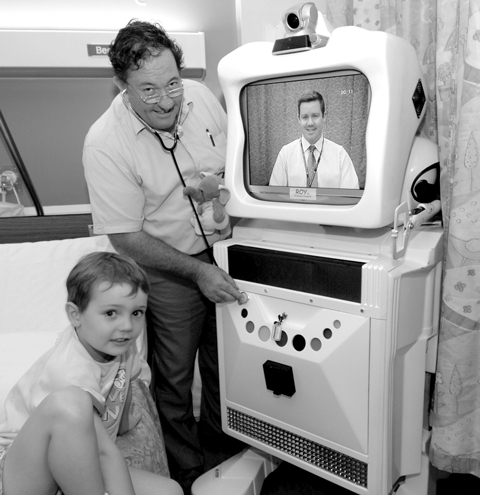
8 Key points
The focus of telemedicine must move beyond simply the provision of equipment and network connectivity.
Telemedicine services should be designed according to clinical needs and complement conventional outpatient services.
Once the appropriate infrastructure is established, the success of telemedicine depends on the administrative and clinical systems that support its operation.
To engage clinicians, telemedicine requires simplicity of use, ease of access to facilities, and at least financial parity with live consultations.
Coordination of referrals and remote management of sessions are key factors in the success of telemedicine.
The potential savings for government health departments are significant. These are predominantly related to reduced travel costs, and should be redirected into the operational costs of telemedicine services.
Telemedicine services should be developed in conjunction with a robust research program to ensure clinical and cost-effectiveness.
- Anthony C Smith1
- Leonard C Gray2
- 1 Centre for Online Health, University of Queensland, Brisbane, QLD.
- 2 Department of Medicine, Princess Alexandra Hospital, Brisbane, QLD.
None identified.
- 1. Planning Information and Forecasting Unit, Queensland Government Department of Infrastructure and Planning. Appendix A: Queensland population update No. 11, 2007 (based on LGA boundaries). http://www.frasercoast.qld.gov.au/business/PIFUFCRC.pdf (accessed Sep 2008).
- 2. Hailey D, Roine R, Ohinmaa A. Systematic review of evidence for the benefits of telemedicine. J Telemed Telecare 2002; 8 Suppl 1: 1-30.
- 3. Hailey D, Ohinmaa A, Roine R. Study quality and evidence of benefit in recent assessments of telemedicine. J Telemed Telecare 2004; 10: 318-324.
- 4. Queensland Health. Queensland Health annual report 2005–06. Brisbane: Queensland Government, 2006: 98. http://www.health.qld.gov.au/publications/corporate/annual_reports/annualreport2006/default.asp (accessed Sep 2008).
- 5. Smith AC. Telepaediatrics. J Telemed Telecare 2007; 13: 163-166.
- 6. Smith AC. The feasibility and cost-effectiveness of a novel telepaediatric service in Queensland [PhD thesis]. Brisbane: University of Queensland, 2004: 1-212.
- 7. Smith AC, Isles A, McCrossin R, et al. The point-of-referral barrier — a factor in the success of telehealth. J Telemed Telecare 2001; 7 Suppl 2: 75-78.
- 8. Smith AC. Telepaediatrics in Queensland. In: Wootton R, Batch J, editors. Telepaediatrics: telemedicine and child health. London: Royal Society of Medicine Press, 2004: 25-39.
- 9. Williams M, Smith AC. Paediatric outreach services. J Paediatr Child Health 2004; 40: 501-503.
- 10. Smith AC, Coulthard M, Clark R, et al. Wireless telemedicine for the delivery of specialist paediatric services to the bedside. J Telemed Telecare 2005; 11 Suppl 2: S81-S85.
- 11. Smith AC, Kimble RM, O’Brien A, et al. A telepaediatric burns service and the potential travel savings for families living in regional Australia. J Telemed Telecare 2007; 13 Suppl 3: 76-79.
- 12. Smith AC, Patterson V, Scott RE. Reducing your carbon footprint: how telemedicine helps. BMJ 2007; 335: 1060.
- 13. Smith AC, Scuffham P, Wootton R. The costs and potential savings of a novel telepaediatric service in Queensland. BMC Health Serv Res 2007; 7: 35.
- 14. Smith AC, Youngberry K, Isles A, et al. The family costs of attending hospital outpatient appointments via videoconference and in person. J Telemed Telecare 2003; 9 Suppl 2: S58-S61.
- 15. Martin-Khan M, Varghese P, Wootton R, Gray L. Successes and failures in assessing cognitive function in older adults using video consultation. J Telemed Telecare 2007; 13 Suppl 3: 60-62.
- 16. Martin-Khan M, Varghese P, Wootton R, Gray L. Physical examination and diagnosis of dementia for video-consultation. J Am Geriatr Soc 2008; 56: 947-949.
- 17. Gray L, Wootton R. Comprehensive geriatric assessment “online”. Australas J Ageing 2008; 27: 205-208.





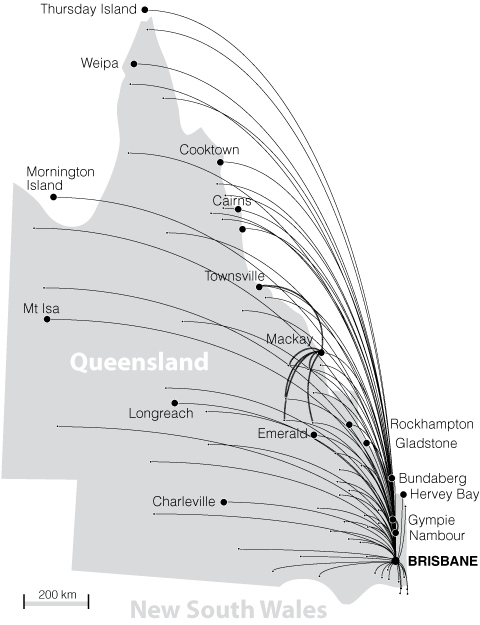
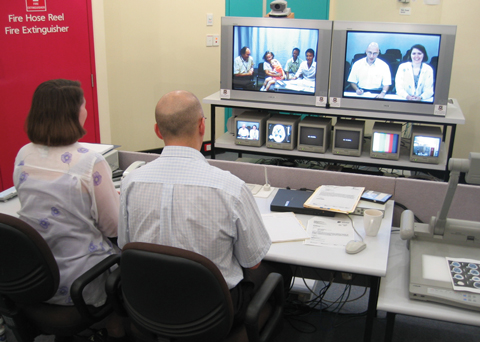
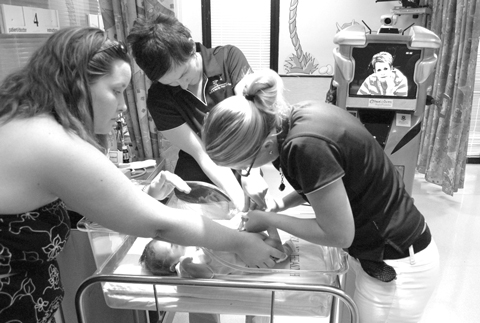
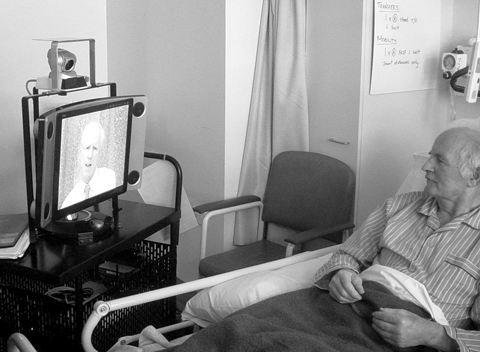
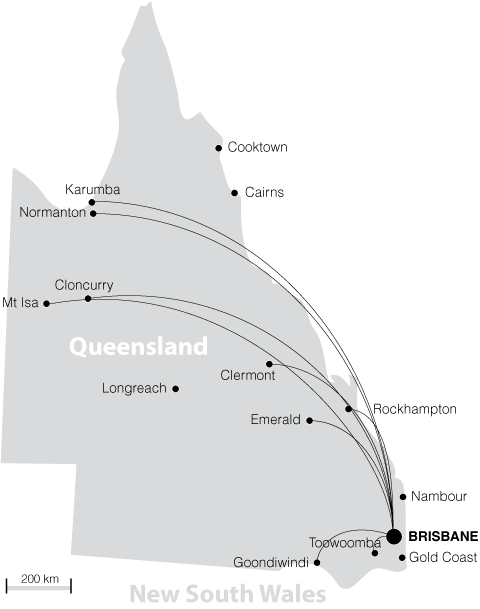
Abstract
Telemedicine can help improve access to health care for people in rural and remote communities, but its uptake has been slow and fragmented.
A telepaediatric service in Queensland, initiated in 2000, has made use of mobile “robot” videoconferencing systems. It has been cost-effective and well accepted by patients and clinicians.
Telegeriatric services were instigated in Queensland in 2005, principally using videoconferencing. Telegeriatrics has been ideal for frail older patients in remote areas.
For telemedicine to become a mainstream service, its focus must move beyond simply the provision of equipment and network connectivity.
Telemedicine must be funded adequately if it is to be successful.